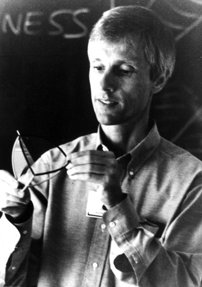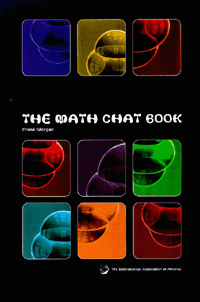- About MAA
- Membership
- MAA Publications
- Periodicals
- Blogs
- MAA Book Series
- MAA Press (an imprint of the AMS)
- MAA Notes
- MAA Reviews
- Mathematical Communication
- Information for Libraries
- Author Resources
- Advertise with MAA
- Meetings
- Competitions
- Programs
- Communities
- MAA Sections
- SIGMAA
- MAA Connect
- Students
- MAA Awards
- Awards Booklets
- Writing Awards
- Teaching Awards
- Service Awards
- Research Awards
- Lecture Awards
- Putnam Competition Individual and Team Winners
- D. E. Shaw Group AMC 8 Awards & Certificates
- Maryam Mirzakhani AMC 10 A Awards & Certificates
- Two Sigma AMC 10 B Awards & Certificates
- Jane Street AMC 12 A Awards & Certificates
- Akamai AMC 12 B Awards & Certificates
- High School Teachers
- News
You are here
Frank Morgan's Math Chat - $1000 HIGH SCHOOL CALCULUS STUDENT AWARD
 |
 |
The National High School Calculus Competition, from eCalculus.org, will award $1000 to the winning student. A teacher may nominate any US junior high or high school calculus student. Nominations are due by February 29, 2000. See the web site, eCalculus.org, for instructions.
MATH CHAT TV, the live, call-in show with questions and prizes, will air on the web Wednesdays, January 12, 19, and 26, 7-7:30 pm Eastern time, at raserver.williams.edu/live/MathChat.rm
VITAL SINES. Math Chat has learned that the "unique entertainment" promised for the opening banquet January 18 at the Washington mathematics meetings will include the debut of the latest skit by Colin Adams. Entitled "Vital Sines," it stars Adams, Math Chat's own Frank Morgan, and other Williams College colleagues.
MATH LUNACY. I found some questionable mathematics in the December 21 issue of The Christian Science Monitor (the paper where the Math Chat column began). An article on the moon says: "[In its closest approach to Earth,] the moon should appear about 14 percent larger than it does when it's farthest away from Earth. That's not even the difference between a medium and a large pizza, and who can tell that from 221,463 miles away?" Of course, distance has nothing to do with percentage difference in size or brightness.
Another article describes an 89-year-old man as "nearing his ninth decade." Actually, at age 90, he will enter his tenth decade.
Readers are hereby invited to send in more examples of questionable mathematics from the media.
WHAT did the number zero say to the number eight? "Nice belt." (Submitted from Denmark for England's Millennium Vault, according to USA Today, December 30.)
OLD CHALLENGE. Justin Smith calls 5939 a "right" prime because it remains prime after dropping any number of digits from the right: 5939, 593, 59, and 5 are all prime. How many right primes are there less than 1000? Is there a largest right prime?
ANSWER. Joseph DeVincentis, Jim Wiechmann, Chuck Diminnie, Eric Brahinsky, and Luke Gustafson find by exhaustive search that there are 27 right primes under 1000 and 83 right primes in all, the largest of which is 73,939,133. We know of no elegant proof that there are finitely many. You might suspect that there are only finitely many, since large numbers are very unlikely to be prime, what with all the smaller numbers which might divide them.
Of course all digits of a right prime must be odd (except possibly for an initial 2). José Cañizo Rincón notes that most digits (all but at most two) must be 3 or 9. Indeed, for any initial segment with one 2 and one 1 or 7, the sum of the digits and hence the number would be divisible by 3. Similarly, an initial sequence with no 2 and three digits from {1, 7} would be divisible by 3.
Kok Seng locates right and left primes at Chris Caldwell's famous Prime Page, called "right-truncatable" and "left-truncatable" primes. The left primes are also finite in number (4260); the largest is
Jean-Francois Peltier also notes that twelve numbers are both right and left primes: 2, 3, 5, 7, 37, 53, 73, 313, 317, 373, 3137, 3797.
NEW CHALLENGE (Chris Lang). I imagine myself sitting on a beach in Oregon, watching the Sun set over the Pacific. At a certain moment, the very last bit of the Sun disappears below the horizon. The question is: Can I make that last bit of Sun reappear by jumping up quickly to my full height, or perhaps by very quickly running up the hill behind me, to increase the elevation of my point of view?
Send answers, comments, and new questions by email to Frank.Morgan@williams.edu, to be eligible for Flatland and other book awards. Winning answers will appear in the next Math Chat. Math Chat appears on the first and third Thursdays of each month. Prof. Morgan's homepage is at www.williams.edu/Mathematics/fmorgan.
Copyright 2000, Frank Morgan.




